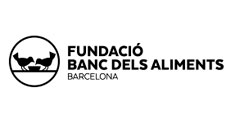How to detect toxic links

When you have a website, having a refined link profile is one of the most important tasks. Analyzing the profile of the links is something that must be done in order to make sure that those that arrive are not actually toxic links that can have negative consequences in the development of the site and, especially, that can lead to a loss in the authority that the links are transferring. Understanding this, next, we will see what they are and how to detect toxic links.
What are toxic links and why can they occur?
To begin with, it is necessary to clearly define what we are talking about when we talk about toxic links. We name as toxic links those backlinks whose origin can be considered by Google as of poor quality or doubtful. Usually, they are links that come from pages or that are not related to the topic that is being discussed in the content and therefore can be considered forced, or where the security of the page is not good.
Reasons why toxic links may appear
Taking this definition into account, we can say that there are several reasons that can lead to a web page having this type of backlinks. The most frequent are the following:
- Due to negative SEO
When referring to negative SEO, we are talking about the technique of intentionally linking from sites that have dubious quality. Which can have negative consequences for the page. It's something some people do in order to negatively affect a site's search engine rankings.
- By farms
Listing farms or directories are used in many cases in order to get links for free. However, the most common is that these links are not related to the theme of the content or the page in particular, not providing any value in terms of SEO but neither of expanding the content for the user.
How to detect toxic links and remove them?
As we have seen previously, the existence of toxic links can negatively impact the SEO positioning of a site. Therefore, it is very important to detect toxic links and proceed to eliminate them to prevent this from happening. In this sense, the first step is usually to carry out an audit related to the profile of the links on a page in order to check them and verify their quality.
This will require professional work to ensure the best results, especially in cases where the number of links can be very large. One of the most common tools today to carry out this task is through Google Search Console. By accessing the "links" section, you can find out their profile. Providing other interesting data such as the websites with the most links, the most linked pages and the most frequent link texts, among other things.
Remove toxic links
Once you have been able to analyze the links, it is time to proceed to remove the toxic links. One of the most common ways to do it is manually, by going to a professional service that can carry out the corresponding analysis and proceed to eliminate it.
But, in addition, a specialist can use different link disavowal tools, which are aimed at disavowing or eliminating any link that points to a website in a very practical way and blocking these negative links.
At 202 Digital Reputation we are a specialized digital reputation agency. We eliminate, modify or de-index negative information or personal data that may appear on the web, while detecting and eliminating toxic links that may harm your site.





